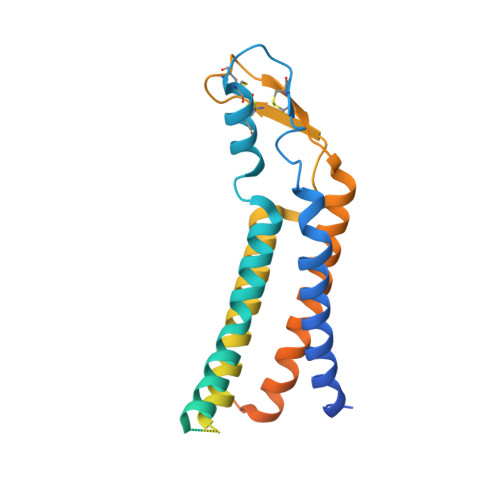Cryo-EM structures of human Cx36/GJD2 neuronal gap junction channel.
Lee, S.N., Cho, H.J., Jeong, H., Ryu, B., Lee, H.J., Kim, M., Yoo, J., Woo, J.S., Lee, H.H.(2023) Nat Commun 14: 1347-1347
- PubMed: 36906653
- DOI: https://doi.org/10.1038/s41467-023-37040-8
- Primary Citation of Related Structures:
7XKI, 7XKK, 7XKT, 7XL8, 7XNH, 7XNV, 8HKP - PubMed Abstract:
Connexin 36 (Cx36) is responsible for signal transmission in electrical synapses by forming interneuronal gap junctions. Despite the critical role of Cx36 in normal brain function, the molecular architecture of the Cx36 gap junction channel (GJC) is unknown. Here, we determine cryo-electron microscopy structures of Cx36 GJC at 2.2-3.6 Å resolutions, revealing a dynamic equilibrium between its closed and open states. In the closed state, channel pores are obstructed by lipids, while N-terminal helices (NTHs) are excluded from the pore. In the open state with pore-lining NTHs, the pore is more acidic than those in Cx26 and Cx46/50 GJCs, explaining its strong cation selectivity. The conformational change during channel opening also includes the α-to-π-helix transition of the first transmembrane helix, which weakens the protomer-protomer interaction. Our structural analyses provide high resolution information on the conformational flexibility of Cx36 GJC and suggest a potential role of lipids in the channel gating.
Organizational Affiliation:
Department of Life Sciences, Korea University, Seoul, 02841, Republic of Korea.














